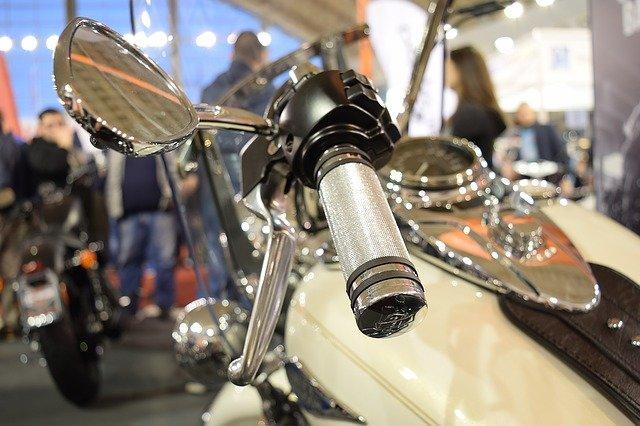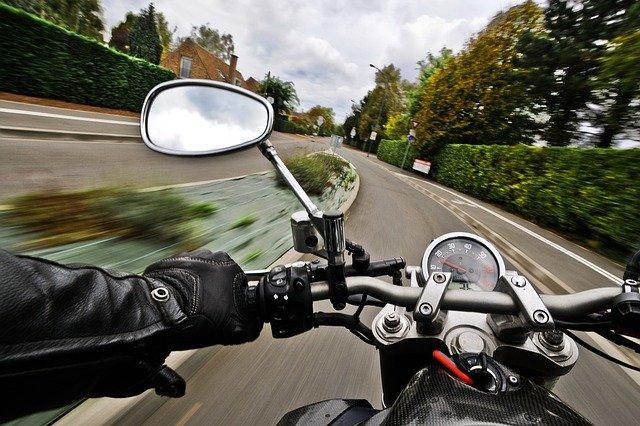How well to brake on a motorcycle?
Content
How well to brake on a motorcycle? Eh yes! The question is urgent. Because if you are new to this topic, you will quickly find that successfully braking without crashing, i.e. without falling, is not always easy. Braking on a motorcycle is much more difficult than on a car, according to a recent study by the Highway Traffic Safety Service. This is for the simple reason that the braking system of cars is more efficient.
In addition, it is theoretically easy to say that at some point you need to slow down. But in practice, to achieve this feat - because it really is one - you must first know how to brake, how the braking system of the motorcycle you are riding works, and what its capabilities are.
Are you new? Are you going to drive your two-wheeled vehicle for the first time? Learn how to brake properly on your motorcycle.
How to brake on a motorcycle: front brake or rear brake?
Most motorcycles have both front and rear brake controls. We often hear that you need to use the front brake first for braking, and this is not entirely wrong. This is true in some situations. But that doesn't mean the rear brake is useless, of course.
In fact, it's all about balance. And, unfortunately, the latter may differ depending on the situation. Therefore, first of all, it should be remembered that there are no ready-made formulas. The best way to determine which command to use the most at any given time is to practice. Only then can you understand how your braking system works. And subsequently, in this way, you can achieve good braking on a motorcycle.

Good braking on a motorcycle: the role of the front brake
On most scooters, the front brake lever is located on the right handle.
This is not a rumor, this is the main engine of the braking system. In other words, the success of a business in most cases depends on it. Because when you slow down, you need to ask him the most. According to experts, in most cases, its role is to provide 70% of braking. And this, in particular, if the pilot needs to quickly decelerate, in the shortest possible time. In other words, in the event of emergency braking.
But keep in mind that the front brake is by far the most effective, but also the most effective. more dangerous... If you put too much force on it, especially if you are driving at high speed, you can suddenly lock your front wheel. This will inevitably lead to a fall. On the other hand, if you do not ask for it or if it is not used enough, precisely because you are afraid to do too much, you will not be able to stop quickly. As a result, if you brake hard with the intent to cause a collision, it will be missed.
Good braking on a motorcycle: the role of the rear brake
On most scooters, the rear brake adjuster is located on the left handlebar.
It would be a mistake to assume that although the front brake provides 70% of the braking power, the rear brake does not play a significant role. Because if it's true that it only plays a 15% role there - the remaining 15% should be attributed to engine braking - its role is nonetheless not the least. This is even vital, because in fact, if the rear brake does not do its job - no matter how small, it will be impossible to slow down... Braking will not work properly.
In other words, in order to brake well on a motorcycle, you must apply both brakes. The first initiates the slowdown and the second maintains it.
Criteria to be considered in order to brake properly on a motorcycle
However, knowing when and how to use the front and rear brakes is not enough for proper braking on a motorcycle. Several criteria need to be considered, such as the number of fingers applying pressure, the driver's posture when braking, and the direction of their gaze.
Good braking on a motorcycle: looking direction
Eh yes! The direction of the gaze is immense, even vital. Because it's only looking at where you want to stop that you will succeed in braking at this very moment.
Therefore, the first rule to follow is that you must look straight ahead. And you need to focus on where you want to stop because your brain will know that this is where you want to go. Therefore, he will make sure that your body responds so as not to exceed this point.
Based on this principle, so don't look at the obstacle what you want to avoid. Because otherwise, your brain will think that you want to get there.

Good braking on a motorcycle: posture
Quite surprisingly, successful braking also depends on the rider's body position. When driving a two-wheeled vehicle, you will find that posture can affect how you stop... Some positions can facilitate and improve braking, while others will have the opposite effect and cause you to fall.
Here are some rules to follow when braking:
- Lean well on the footrests so that they can support your body weight;
- Squeeze your knees tightly to maintain balance, but also to prevent hard hits against the tank;
- Keep your arms straight again to avoid sliding forward. However, do not block your elbows, otherwise you will not be able to control the direction of movement. You also need to be able to bend them in the event of a collision in order to absorb the impact.
Good motorcycle braking: how many fingers should you use?
Why the number of fingers? This is important because it will determine force of pressure applied to the brake controls... And, as you probably know, it is this pressure that also determines the braking efficiency. If it is too high, the braking will be harsh and harsh. The front wheel will lock, the rear wheel will unload and you will be thrown. If it's too low, the bike won't stop and you'll be in good shape. To survive, you must find the right pressure:
- Finger more than enough if you want to slow down or stop slowly, without urgency. It is also possible to use only one finger for hard braking on some motorcycles, the controls of which are extremely sensitive.
- Two fingersusually the index and middle fingers are sufficient for emergency braking.
- Three or four fingersthis is usually a bit too much.
But again, remember that there is no ready-made formula. We could tell you that you have one, two, or three fingers and the result may not necessarily be the same for every bike. It all depends on the braking system. But in any case, as a preventive measure, it is recommended to keep two fingers on the lever at all times. It will save you time, probably a few seconds, but precious seconds, because they can save your life.
